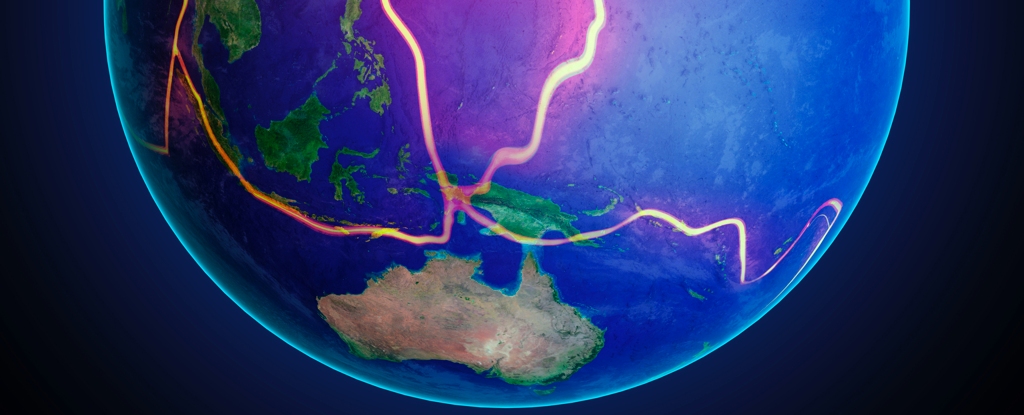Marine life booms with a surge of new species every 36 million years, and tectonic uplift is the indirect reason, new research has found.
A detailed analysis of the fossil record and geology reveals a change in sea level occurring in response to a 36-million-year cycle of tectonic movement.
A team led by geologist Slah Boulila of Sorbonne University in France has found that this is disrupting multiple ecosystems, causing many species to struggle – and new ones to thrive to fill the new ones ecological niches that arise.
“In terms of tectonics, the 36-million-year cycle marks changes between faster and slower seafloor spreading, resulting in cyclic depth changes in ocean basins and in the tectonic transfer of water into the Earth’s depths.” says geoscientist Dietmar Müller from the University of Sydney.
“This in turn has led to fluctuations in the inundation and drying out of continents, with periods of extensive shallow seas promoting biodiversity.”
A close look at the fossils shows that biodiversity is not a nice, even constant. Instead, it fluctuates dramatically on scales of tens of millions of years, punctuated by extinction events and the emergence of new species.
What is not clear is what is driving these changes; whether every event is unique to yourselfor whether there is an underlying mechanism that connects them.
The research by Boulila and his team consisted of a careful analysis of multiple geological datasets from the past 250 million years, combined with computer simulations and modeling using what is known as tectonic visualization software gplates.
The earth’s crust is never still. It consists of separate tectonic plates that are constantly moving and being recycled. Places where the tectonic plates meet under the ocean are called subduction zones; there is water sucked deep under the coatto be spat out later by volcanic activity.
In addition, tectonic movements can cause it spread out on the sea floor when the plates move apart. Both these mechanisms can cause sea level fluctuations over long periods of time.
In their data and simulations, the researchers found a 36-million-year cycle in the diversity of marine life… and this was consistent with a cycle found in tectonics, at sea level, and at large scale rock strata data In the same period.
They say these results provide compelling evidence that Earth-caused sea level changes are happening tectonic cycles play a key role in biodiversity cycles and the formation of ecosystems.
frameborder=”0″allow=”accelerometer; auto play; clipboard writing; encrypted media; Gyroscope; picture in picture; web share”allowfullscreen>
“This research challenges previous ideas about why species changed over long periods of time,” Says Mueller.
“The cycles last 36 million years because tectonic plates are receding in regular patterns into the convection mantle, the moving part of the deep Earth, like hot, thick soup in a slow-moving pot.”
There are other triggers throughout the history of the earth this is possible promote biodiversity. For example, the team also found evidence of a 62-million-year biodiversity cycle.
This could be due to changes in carbon dioxide levels, but needs further study, the researchers say.
The research was published in Proceedings of the National Academy of Sciences.





